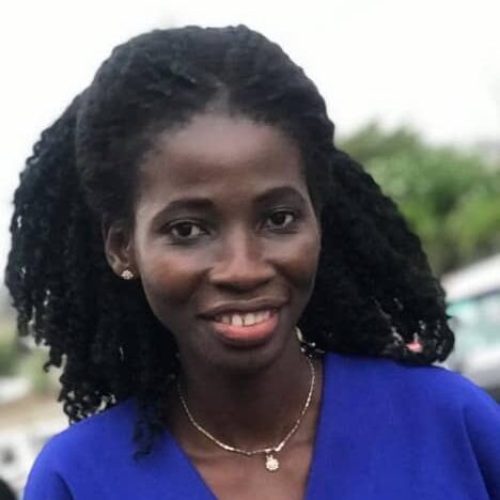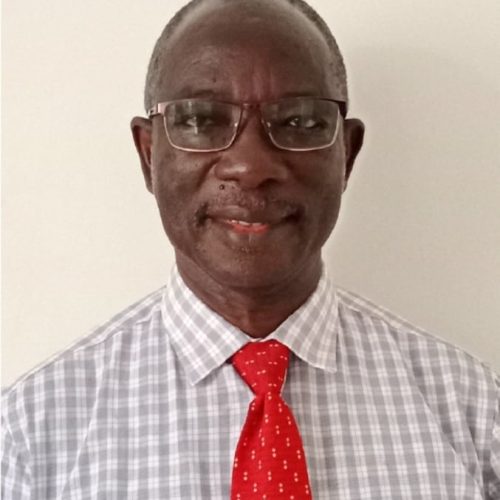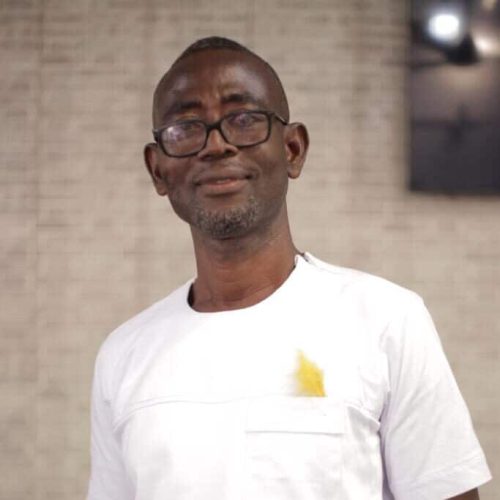Lymphatic Filariasis



The Global Program to Eliminate Lymphatic Filariasis (GPELF) has seen significant achievements in the elimination of LF as a public health problem in the last two decades. The main strategy of the GPELF is the treatment of at least 65% of endemic communities for a minimum of 5 years to reduce infection to levels below transmission thresholds. A combination of albendazole with ivermectin and/or diethylcarbamazine is used, depending on co-endemicity with onchocerciasis and loa loa. Of 72 endemic countries, 11 (2 in Africa) have been validated for elimination as a public health problem, 10 stopped mass drug administration (MDA) and are under surveillance, 46 are implementing MDA and 5 are yet to start MDA. My research focusses on addressing the endgame challenges to LF elimination and supporting country Neglected Tropical diseases (NTD) programmes in evidence-based decision making.
- Molecular xenomonitoring (MX)
- Transmission assessment
- Monitoring and evaluation
- Evaluation of new diagnostics
- Design and implementation of novel surveillance strategies
My team has been involved in monitoring and evaluation activities of the LF programme in Ghana, utilizing new concepts and approaches to address the endgame challenges of the LF elimination programme. We have been instrumental in supporting the Ghana NTD programme in various research activities. These contributions, although mainly in Ghana, have provided insights into the implementation and operational research challenges, and can be extended to other African countries with similar challenges.
Through various studies, we have aimed to simplify the tools to enable an easier integration in LF control programmes. This body of work demonstrates the usefulness of MX in evaluating LF transmission in disease endemic countries. The collection of mosquitoes allows us to leverage a range of optimized, practical tools. Our work has been instrumental in critical programme decision making. The MX work in Togo, for example, contributed evidence to the dossier submitted for validation of the elimination of LF as a disease of public health. The potential for using mosquitoes to screen for blood-borne pathogens in animals and humans is being recognized by the global One Health community and we are making great progress in overcoming limitations and adapting the MX approach as a low-tech, adaptable surveillance platform.
We are also evaluating different strategies aimed at addressing the challenges of poor treatment coverages and MDA never-treatment in LF hotspot districts and communities. These current studies show that targeted approaches can be effective in reaching people who for various reasons have missed the annual MDAs.
- Strategies for the ENdgame: Targeting Infections among Non-Treated in the Elimination of Lymphatic filariasis (SENTINEL) – Phase II.
Ahorlu CS, Otchere J, Sedzro KM, Pi-Bansa S, Asemanyi-Mensah K, Opare JL, Alomatu B, Long EF, de Souza DK (2022). A Comparative Study of Lymphatic Filariasis-Related Perceptions among Treated and Non-Treated Individuals in the Ahanta West Municipality of Ghana. Trop. Med. Infect. Dis. 7:273. https://doi.org/10.3390/tropicalmed7100273
de Souza DK, Otchere J, Sumboh JG, Asiedu O, Opare J, Asemanyi-Mensah K, Boakye DA, Gass KM, Long EF and Ahorlu CS (2022). Finding and eliminating the reservoirs: Engage and treat, and test and treat strategies for lymphatic filariasis programs to overcome endgame challenges. Front. Trop. Dis. 3:953094. https://doi.org/10.3389/fitd.2022.953094
Ahorlu CS, Okyere D, Pi-Bansa S, Otchere J, Marfo B, Asemanyi-Mensah K, Opare JL, Long EF, de Souza DK (2022). COVID-19 related perception among some community members and frontline healthcare providers for NTD control in Ghana. BMC Infectious Diseases 22:106. https://doi.org/10.1186/s12879-022-07084-0
de Souza DK, Gass K, Otchere J, Htet YM, Asiedu O, Marfo B, Biritwum N-K, Boakye DA, Ahorlu CS (2020). Review of MDA registers for Lymphatic Filariasis: Findings, and potential uses in addressing the endgame elimination challenges. PLoS Negl Trop Dis 14(5): e0008306. https://doi.org/10.1371/journal.pntd.0008306
Pi-Bansa S, Osei JHN, Kartey-Attipoe WD, Elhassan E, Agyemang D, Otoo S, Dadzie SK, Appawu MA, Wilson MD, Koudou BG, de Souza DK, Utzinger J and Boakye DA (2019). Assessing the Presence of Wuchereria bancrofti Infections in Vectors Using Xenomonitoring in Lymphatic Filariasis Endemic Districts in Ghana. Trop Med Infect Dis 4(1): 49. https://doi.org/10.3390/tropicalmed4010049
Boakye DA, Frempong KK, Ogoussan KT, Otoo S, Rebollo Pollo M, Dadzie SK, de Souza DK (2019). Implementing a community vector collection strategy for monitoring vector-borne diseases in Ghana. Gates Open Research 3:722 https://doi.org/10.12688/gatesopenres.12933.1
Opoku M, Minetti C, Kartey-Attipoe WD, Otoo S, Otchere J, Gomes B, de Souza DK, Reimer LJ (2018). An assessment of mosquito collection techniques for xenomonitoring of anopheline-transmitted Lymphatic Filariasis in Ghana. Parasitology 1–9. https://doi.org/10.1017/S0031182018000938
Koudou BG, de Souza DK, N-K Biritwum, R Bougma, M Aboulaye, E Elhassan, S Bush, DH Molyneux. (2018) Elimination of lymphatic filariasis in West African cities: is implementation of mass drug administration a necessity to reach this goal? Lancet Infect Dis 1473-3099(18):30069-0. http://dx.doi.org/10.1016/S1473-3099(18)30069-0
Dorkenoo MA, de Souza DK, Apetogbo Y, Oboussoumi K, Yehadji D, Tchalim M, Etassoli S, Koudou B, Ketoh GK, Sodahlon Y, Bockarie MJ, Boakye DA (2018). Molecular xenomonitoring for post-validation surveillance of Lymphatic Filariasis in Togo: no evidence for active transmission. Parasites and Vectors 11:52 https://doi.org/10.1186/s13071-017-2611-9
Pam DD, de Souza DK, Walker S., Opoku M, Sanda S, Nazaradeen I, Anagbogu IN, Okoronkwo C, Davies E, Elhassan E, Molyneux D, Bockarie MJ, Koudou BG (2017). Is mass drug administration against lymphatic filariasis required in urban settings? The experience in Kano, Nigeria. PLoS Negl Trop Dis 11(10): e0006004. https://doi.org/10.1371/journal.pntd.0006004
de Souza DK, Ahorlu CS, Adu-Amankwah S, Otchere J, Mensah SK, Larbi IA, Mensah GE, Biritwum, Boakye DA (2017). Community-based trial of annual versus biannual single-dose Ivermectin plus Albendazole against Wuchereria bancrofti infection in human and mosquito populations: study protocol for a cluster randomized controlled trial. Trials 18: 448. https://doi.org/10.1186/s13063-017-2196-9
Kanamitie JN, Ahorlu CS, Otchere J, Aboagye-Antwi F, Kwansa-Bentum B, Boakye DA, Biritwum N-K, Wilson MD, de Souza DK (2017). A twelve months longitudinal parasitological assessment of lymphatic filariasis positive individuals: the impact of a bi-annual treatment with Ivermectin and Albendazole. Trop. Med. Int. Health. 22(11): 1451-1456. https://doi.org/10.1111/tmi.12974
http://onlinelibrary.wiley.com/doi/10.1111/tmi.12974/pdf
- de Souza DK, Offei Owusu I, Otchere J, Adimazoya M, Frempong KK, Ahorlu CS, Boakye DA, Wilson MD. (2017). An evaluation of Wb123 antibody ELISA in individuals treated with Ivermectin and Albendazole, and implementation challenges in Africa. Pan African Medical Journal 27:65. https://doi.org/10.11604/pamj.2017.27.65.11004
- Biritwum N-K, Garshong B, Alomatu B, de Souza DK, Gyapong M, Kyelem D. (2017). Improving drug delivery strategies for lymphatic filariasis elimination in urban areas in Ghana. PLoS Negl Trop Dis 11(5): e0005619. https://doi.org/10.1371/journal.pntd.0005619.
- Biritwum NK, de Souza DK, Marfo B, Odoom S, Alomatu B, Asiedu O, Yeboah A, Hervie TE, Mensah EO, Yikpotey P, Koroma JB, Molyneux D, Bockarie MJ, Gyapong JO (2017). Fifteen years of programme implementation for the elimination of Lymphatic Filariasis in Ghana: impact of MDA on immuno-parasitological indicators. PLoS Negl Trop Dis 11(3): e0005280 https://doi.org/10.1371/journal.pntd.0005280
- de Souza DK, Yirenkyi E, Otchere J, Biritwum NK, Ameme DK, Sackey S, Ahorlu C, Wilson MD (2016). Assessing Lymphatic Filariasis Data Quality in Endemic Communities in Ghana, Using the Neglected Tropical Diseases Data Quality Assessment Tool for Preventive Chemotherapy. PLoS Negl Trop Dis 10(3): e0004590. https://doi.org/10.1371/journal.pntd.0004590
- Okorie NP, de Souza DK (2016). Prospects, drawbacks and future needs of xenomonitoring for the endpoint evaluation of lymphatic filariasis elimination programs in Africa. Trans R Soc Trop Med Hyg. 110(2):90-97.
- de Souza DK, Ansumana R, Sessay S, Rebollo MP, Koroma J, Koudou B, Boakye DA, Bockarie MJ (2015). The impact of residual infections on Anopheles-transmitted Wuchereria bancrofti after multiple rounds of mass drug administration. Parasites and Vectors. 8:488.
- Kouassi BL, de Souza DK, Goepogui A, Narh CA, King SA, Mamadou BS, Dadzie S, Boakye DA, Utzinger J, Bockarie M, Koudou BG (2015). Assessing the presence of Wuchereria bancrofti in vector and human populations from urban communities in Conakry, Guinea. Parasites and Vectors. 8:492.
- Owusu IO, de Souza DK, Anto F, Wilson MD, Boakye DA, Bockarie MJ, Gyapong JO (2015). Evaluation of human and mosquito based diagnostic tools for defining endpoints for elimination of Anopheles transmitted lymphatic filariasis in Ghana. Trans R Soc Trop Med Hyg. 109: 628–635.
- de Souza DK, Osei-Poku J, Blum J, Baidoo H, Brown CA, Lawson BW, Wilson MD, Bockarie MJ, Boakye DA (2014). The epidemiology of lymphatic filariasis in Ghana, explained by the possible existence of two strains of Wuchereria bancrofti. Pan Afr Med J. 17:133. https://doi.org/10.11604/pamj.2014.17.133.3370
- de Souza DK, Sesay S, Moore MG, Ansumana R, Narh CA, Kollie K, Rebollo MP, Koudou BG, Koroma JB, Bolay FK, Boakye DA, Bockarie MJ (2014). No evidence for lymphatic filariasis transmission in big cities affected by conflict related rural-urban migration in Sierra Leone and Liberia. PLoS Negl Trop Dis. 8(2):e2700. https://doi.org/10.1371/journal.pntd.0002700
- de Souza DK, Koudou B, Kelly-Hope LA, Wilson MD, Bockarie MJ, Boakye DA (2012). Diversity and transmission competence in lymphatic filariasis vectors in West Africa, and the implications for accelerated elimination of Anopheles-transmitted filariasis. Parasit Vectors. 5:259. https://doi.org/10.1186/1756-3305-5-259
- de Souza D, Kelly-Hope L, Lawson B, Wilson M, Boakye D (2010). Environmental factors associated with the distribution of Anopheles gambiae s.s in Ghana; an important vector of lymphatic filariasis and malaria. PLoS One. 5(3):e9927. https://doi.org/10.1371/journal.pone.0009927



